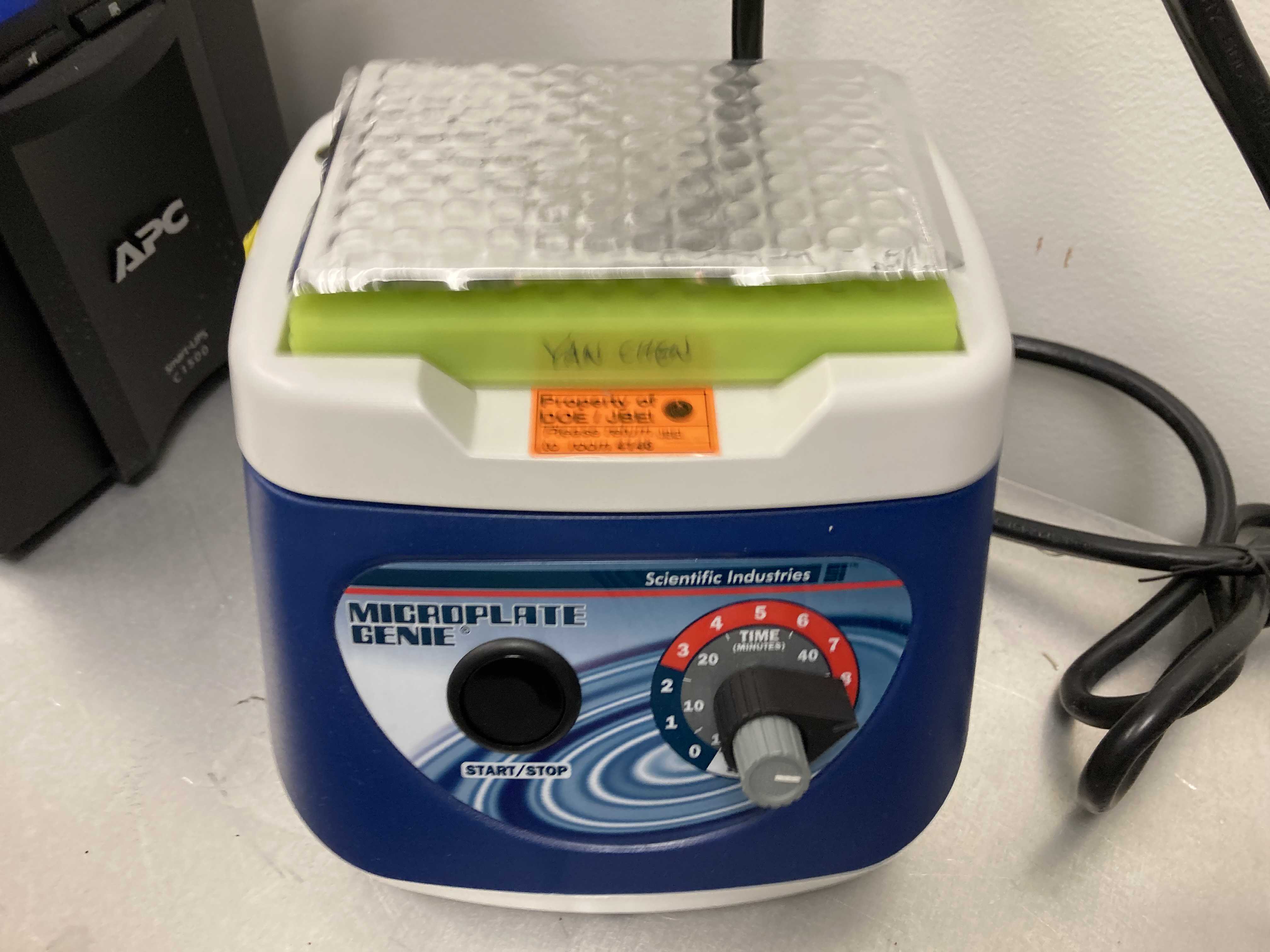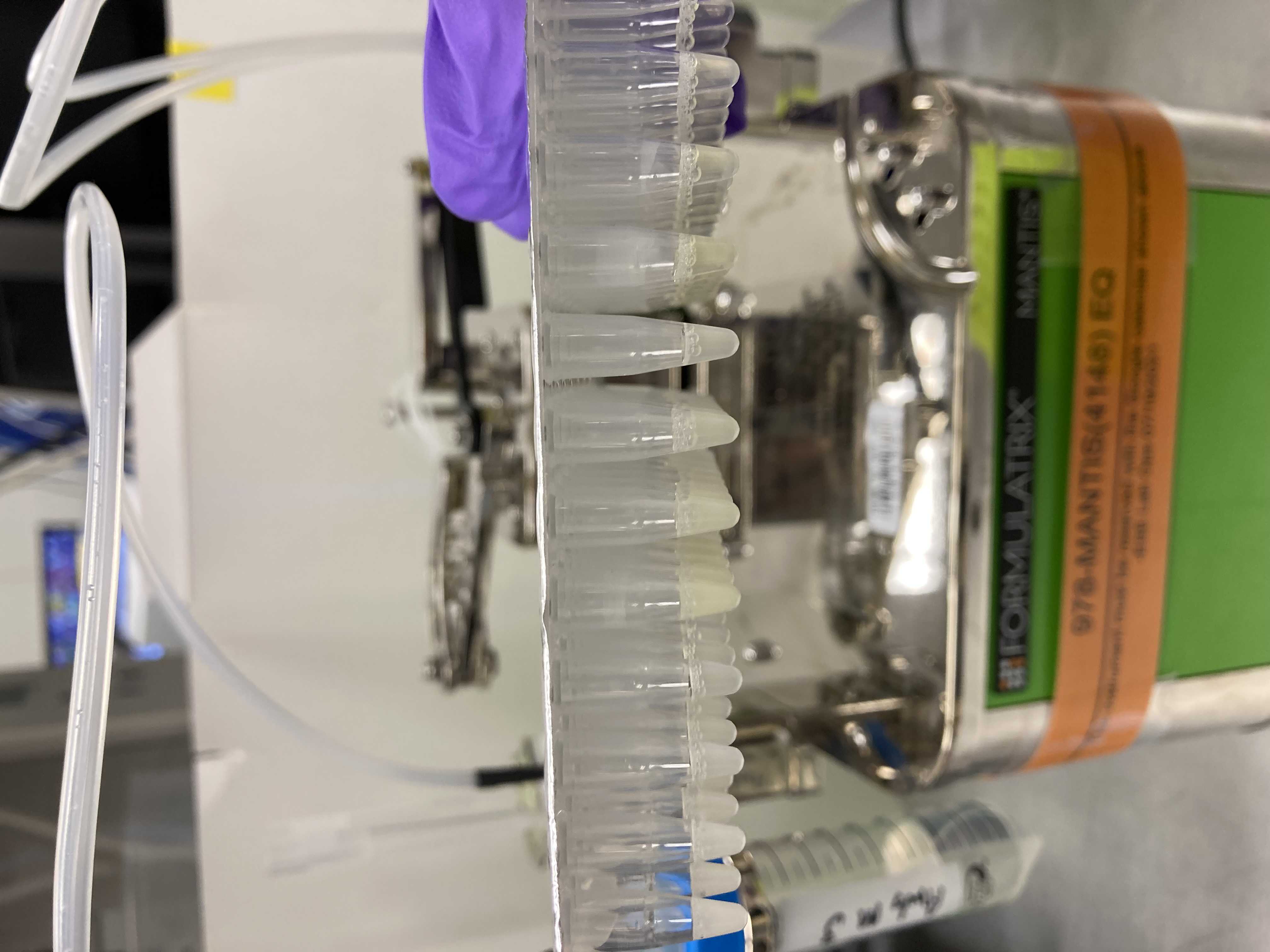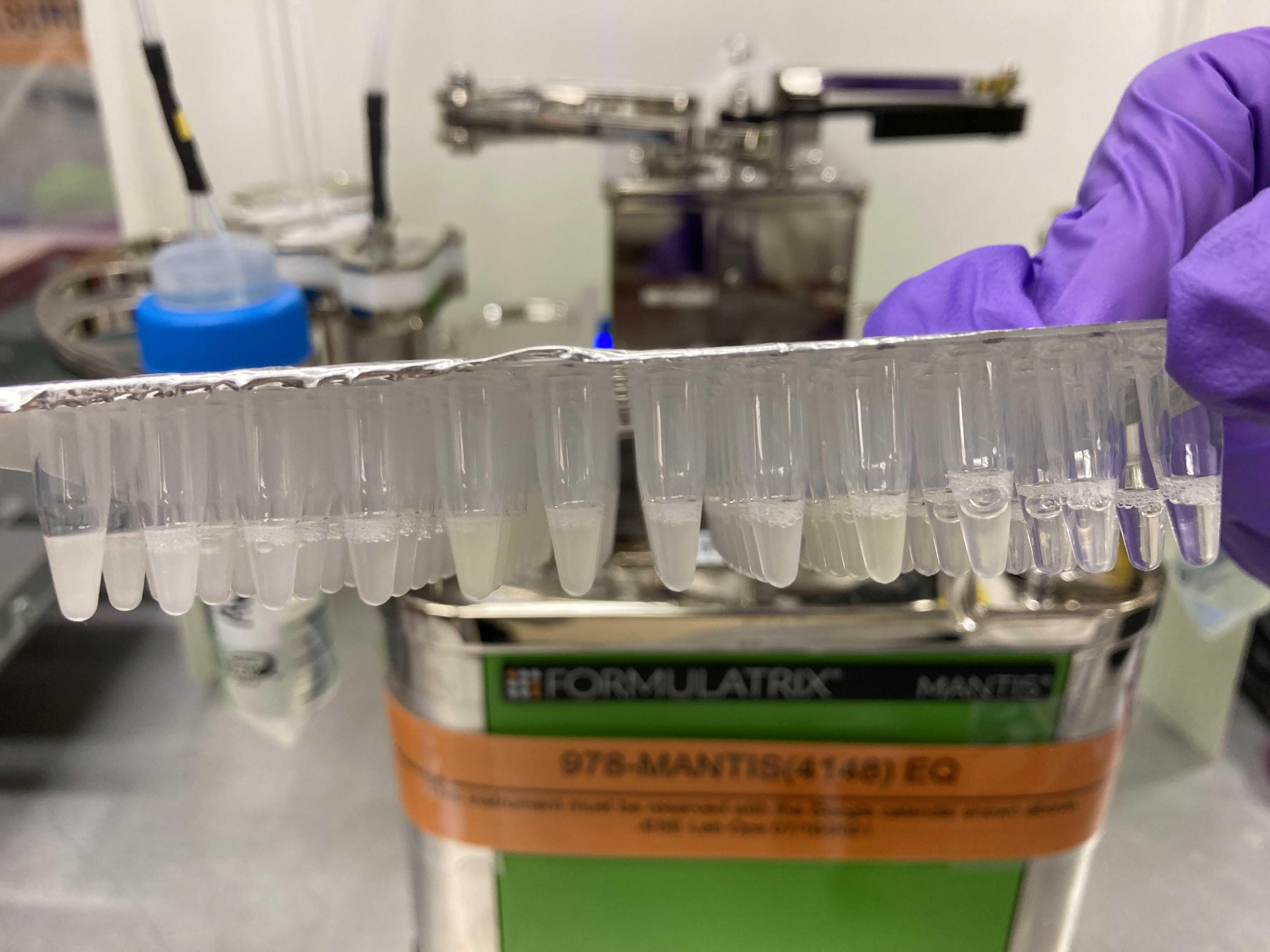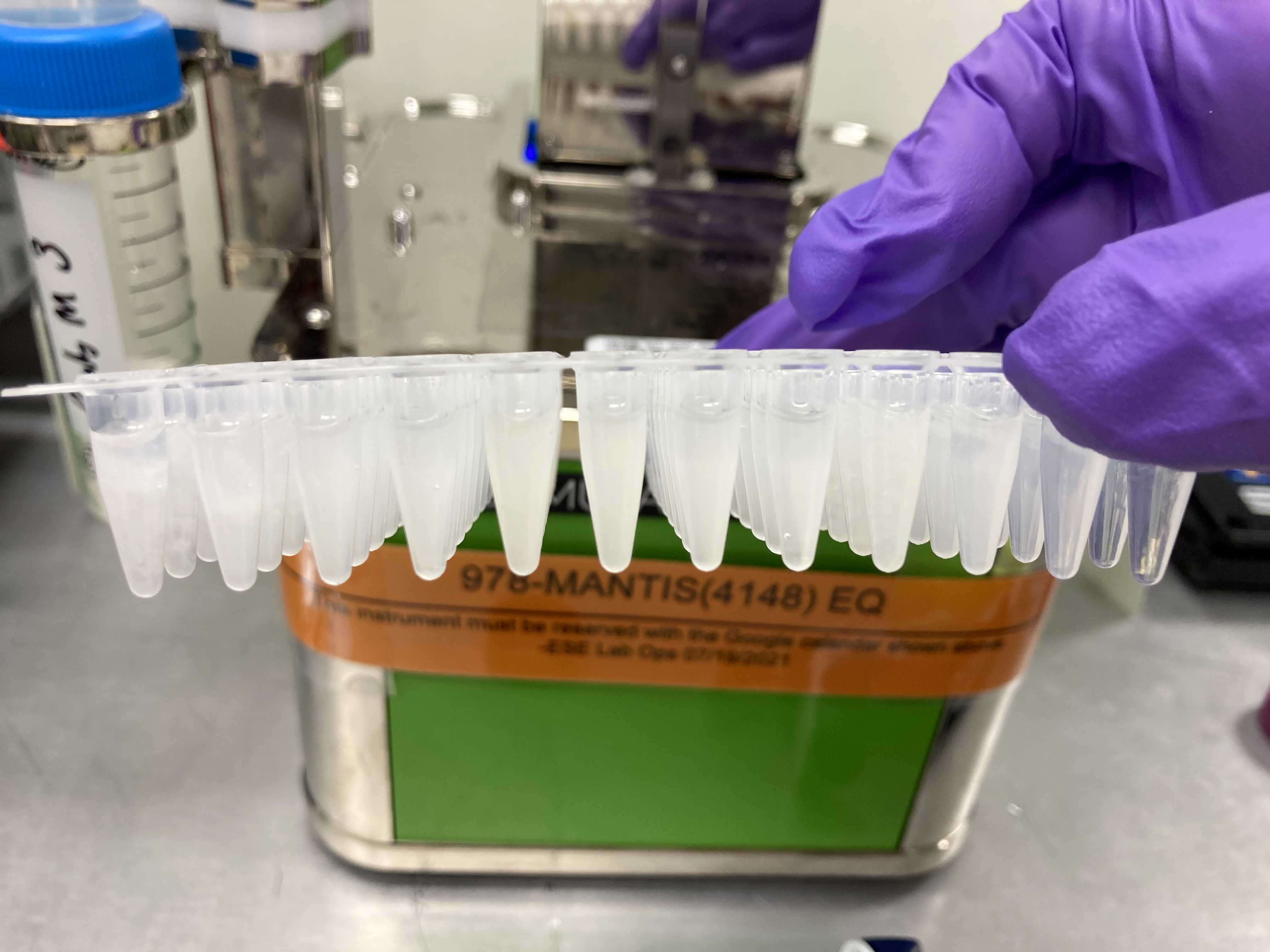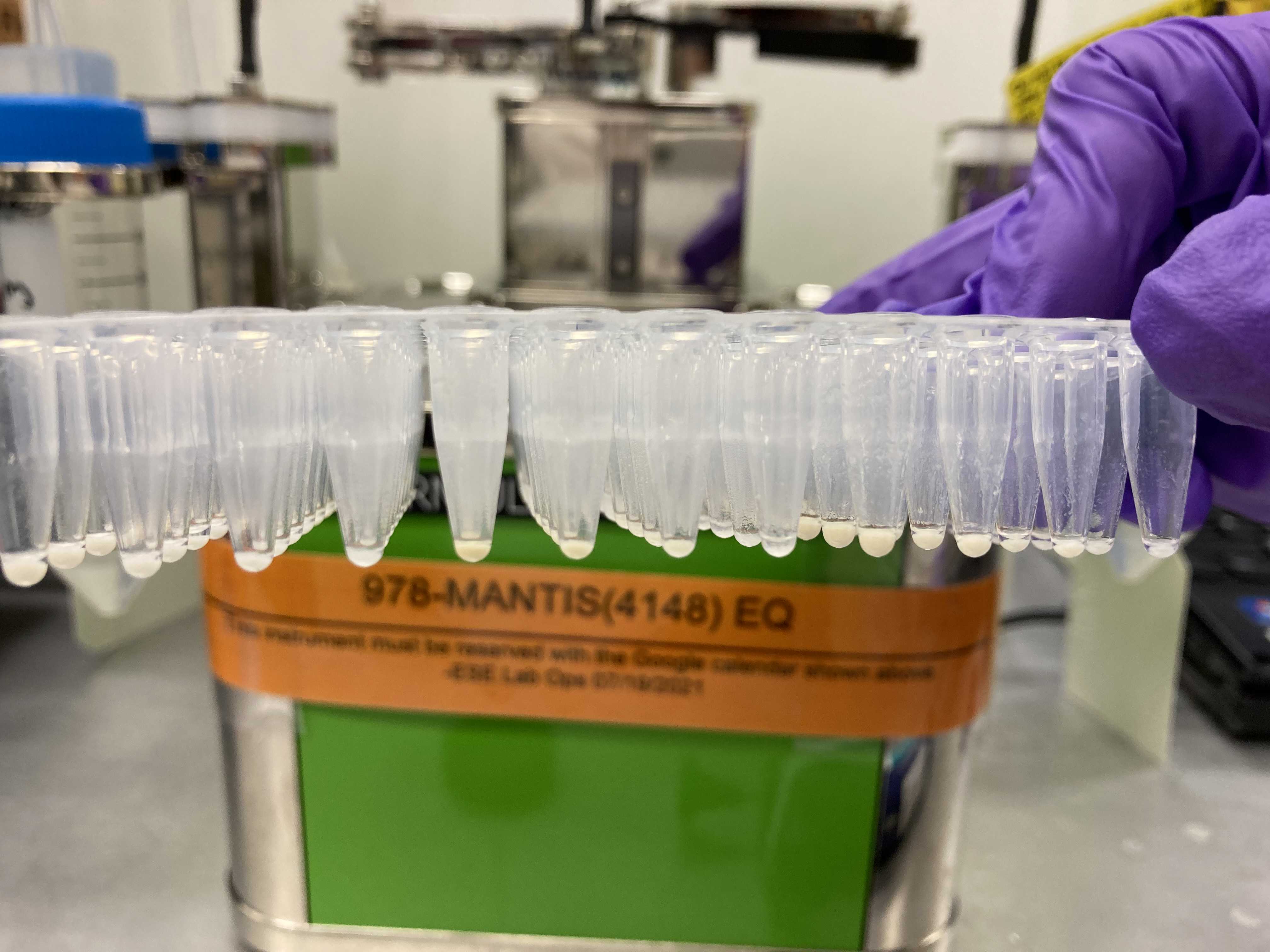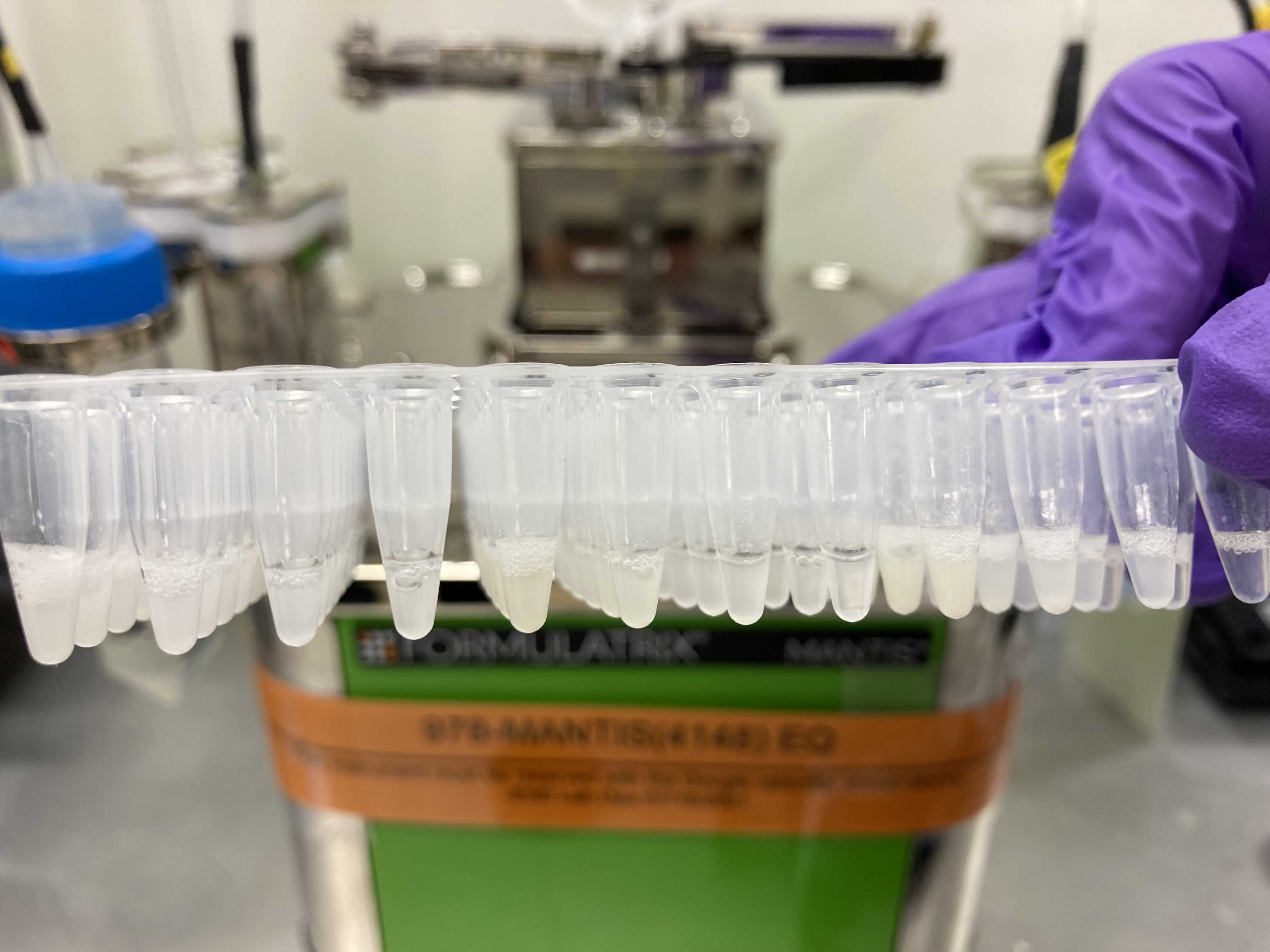Alkaline-SDS cell lysis of microbes with acetone protein precipitation for proteomic sample preparation in 96-well plate format
Yan Chen, Jennifer Gin, Christopher J Petzold
Disclaimer
Abstract
This high-throughput protocol details the steps to extract protein from Gram-negative bacteria, Gram-positive bacteria, or non-filamentous fungi in 96-well plate format for quantitative proteomic workflows. This protocol uses a bench-top automated liquid dispenser but the volumes and times also apply to manual and multi-channel pipetter use. This protocol is designed for lab-based, culture conditions and synthetic community experiments where complex sample matrices are minimized. Additional sample preservation and/or protein extraction methods may be required for environmental samples (e.g., feces, soil) to minimize protein degradation and maintain sample integrity.
This protocol works best as part of a high-throughput proteomic sample preparation workflow with:
Automated Protein Quantitation with the Biomek-FX liquid handler system
and
Automated Protein Normalization and Tryptic Digestion on a Biomek-NX Liquid Handler System
Before start
For this protocol you will need:
-
a bench-top automated liquid dispenser ( e.g. , Formulatrix Mantis) or manual/multi-channel pipetters
-
an Eppendorf 5810R centrifuge with S-4-104 rotor or similar centrifuge
Mix at least 3 mL of NaOH/SDS buffer for final concentrations of:
-
200 mM NaOH
-
1% SDS
or use Qiagen Lysis Buffer P2 (Qiagen, Cat.#19052)
Steps
Cell lysis
Add 25µL of alkaline-SDS cell lysis buffer (200 mM NaOH, 1% SDS) to each well.
Neutralization and Benzonase treatment
Add 2.75µL 1Molarity (M) to each well.
Add 25µL and 0.5µL to each well.
Salt-Acetone protein precipitation
Centrifuge at 4000rpm .
Wash and resuspend protein
Wash protein pellet twice using 150µL.
Store at -20°C until ready for Automated Protein Quantitation with the Biomek-FX liquid handler system.

